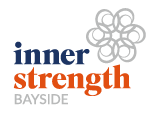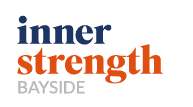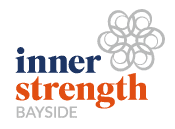5 Key Ways To Get The Most Out Of Your Running Training
The Nike Melbourne Marathon Festival is on Sunday 2nd October, and considering the last two years we have had it is bound to be a good one!
Running is a great way to work on your cardiovascular fitness, maintain muscle and bone mass, prevent chronic health issues, not to mention the mental benefits such as stress management.
Whether you are aiming to lace up for the 5km, 10km, 21km or 42km run there are a number of elements you may want to consider with your training leading up to the big day.
Preparation is key to preventing injury, achieving your individual goals, enjoying the run, and finishing strong.
Here are a Physiotherapist’s top five ways to prepare for the big day:
1.Manage your load
When it comes to preparing for a set distance, whether you are a first-timer or an experienced runner, it is important to slowly increase your running distance and overall load. Large jumps in load – either distance or intensity / speed can cause injury. Up to 70% of recreational and competitive runners sustain overuse injuries in any 12-month period (SMA, 2022).
As a general rule you want to allow anywhere between 10-16 weeks to increase your distance from baseline and condition the body. Each week you should be aiming for approximately a 10% increase in training distance and speed (SMA, 2022). This however is dependent on your baseline strength and fitness, running experience, injury history, age etc.
There are some great training programs to follow for each distance on the Melbourne Running Festival website https://melbournemarathon.com.au/training-hub/
2. Incorporate strength training
No matter what the distance or goal, it is recommended that all runners incorporate some form of individualised resistance training e.g. strength training at home, the gym, or clinical pilates classes.
Strength training helps to prevent injury by strengthening both muscles and their connective tissues, assists in increasing your speed and coordination, and allows you to become more efficient as you stride. This is going to allow you to start and finish your race strong.
A physiotherapy assessment can help individually determine which exercises are going to benefit your running form best.
3. Foot wear
Finding the best-fitting shoe for your feet is extremely important. This will allow you to safely increase your running distance with a reduced risk of injury, prevent blisters, and allow the foot to function as it should as you stride.
With so many different options out there it can be hard to choose. If you are after a new pair and you admit your knowledge is limited then we highly recommend getting yourself along to a Specialty running shoe store to ensure you get the perfect fit for your needs and foot type. You should get your foot measured each time, you often need to go an extra ½ size bigger to allow for swelling whilst you run and to give the toes plenty of room.
4. Hydration, fuel, & recovery
Do not underestimate the importance of a healthy sleep routine, hydration both pre and post training runs (or even during for longer runs), fueling your body with a balanced diet and ensuring you are incorporating some mobility exercises post-training runs for recovery. It is recommended that you leave 24-48 hours between training runs (SMA, 2022).
Stretches worth incorporating into your regime include stretching the calf muscles, hamstrings, quadriceps, and gluteals. Using a foam roller to target these areas can also be useful for myofascial release soon after your run.
For individualised diet recommendations, particularly if you are training for a half or full marathon, we recommend seeing a nutritionist or dietician.
5. See your local physiotherapist early
When it comes to ‘niggles’, pain, or injury in the body it is always a good idea to see a physiotherapist early on to be assessed, treated, and have the correct exercises prescribed for you. 42% of all running injuries are to the knee, followed by 17% to the foot/ankle, 13% to the lower leg, and 11% to the hip/pelvis (SMA, 2022).
It is well known now in the physio world that complete rest is often not the answer in order to recover from injury. What is more important is maintaining some load through the tissues, even if it is in a varied capacity, in order to maintain your strength and fitness.
A physiotherapist can give guidance on how to vary your training program if required, do hands-on manual techniques for your specific injury, and individually prescribe strengthening or mobility exercises to help get you to the finish line.
Whether you are a weekend warrior, a regular runner or a competitive athlete – our team at Inner Strength Bayside can help to keep you pounding the pavement and injury free this running season. Give us a call on 03 8555 4099 or book an appointment online.
Written by Laura Cook – Physiotherapist and fellow runner.
References:
Sports Medicine Australia, 2022. https://sma.org.au/resources-advice/running/


